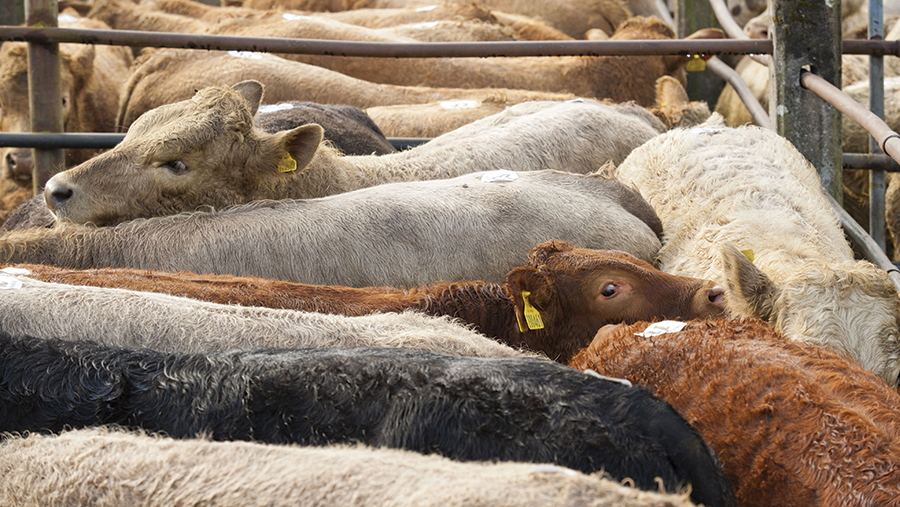Difficult summer leaves two-tier store cattle trade
 © FLPA/REX/Shutterstock
© FLPA/REX/Shutterstock Store cattle prices have largely recovered from the mid-summer blip, although mart averages are being held back by second-quality entries, showing the effects of a challenging summer.
A deadweight beef price crash of 17p/kg in six weeks led to caution among finishers, although marts are now suggesting that much of the drop has been recovered in August.
Sedgemoor
This is certainly the case at Sedgemoor, where Saturday’s trade (1 September) was described by Greenslade Taylor Hunt’s Robert Venner as “more like a first of April trade”.
A yarding of 763 cattle in Sedgemoor’s 400kg+ ring saw another stronger sale, driven by a 20p/kg lift in the prime beef ring over the last three weeks, which has seen strong cattle back up to 230p/kg and run-of-the-mill heifers at 180p/kg.
See also: Prime beef staging recovery after 15p/kg drop
Heifers sold to £1,205 and averaged £775, while steers sold to £1,330 and averaged £827, compared to the previous week, when heifers topped at £1,330 to average £748 and steers sold to £1,300 and averaged £925.
All summer, Mr Venner has been advising farmers to supplement grazing, with the message now being to sell cattle soon, rather than holding on to them for the sake of it.
“Dewy September grass could see cattle go backwards,” warned Mr Venner, adding that, while the western counties have greened up, grass is low in dry matter values, effectively being “green water”.
He said there were some really good stores about, but that a significant number were, understandably, small for their age.
Cumbria
Prices for strong, short-keep cattle are “improving all the time”, but Mark Richardson, livestock manager and auctioneer for Harrison and Hetherington at Kirkby Stephen, said the stronger trade of late is only for the right cattle.
Along with his colleagues at Carlisle, they have observed a “two-tier trade” open up, with longer-keep cattle requiring more forage well adrift of the better end.
“Forage stocks are a little tighter and some finishers have the option of selling their grain for more money this year,” said Mr Richardson.
“Looking forward, people are predicting cattle are going to be short, so that should send the price the right way.”
Forward stores sold to £1,420 twice at Carlisle last week (29 August), with Limousins hitting the top money of £1,370 (x2), £1,290 (x2) and £1,280. British Blues hit £1,190, with several around £1,045-£1,1140 and Angus sold to £1,030-£1,100.
Mr Richardson added that the ever-increasing scrutiny of cattle health and vaccination programmes was evident at sales, particularly from Scottish buyers, owing to BVD rules.
“Without BVD accreditation you cut Scottish buyers out,” he explained. “This is because some of our better store heifers go for breeding, adding hundreds to the price tag.
“Our catalogues have more and more vendors registering with BVDFree England or marketing their stock as being tested and vaccinated.”
